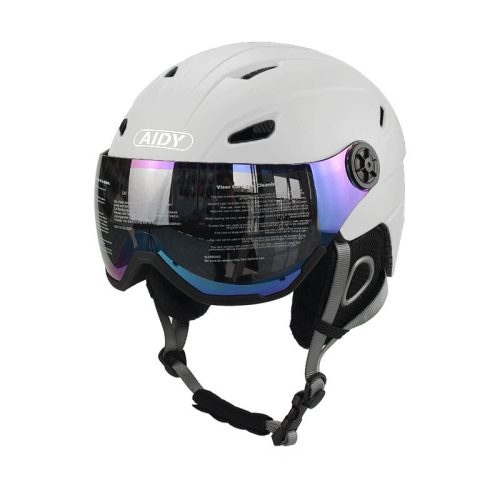1. Helmet Laws for Motorcycles and Motorized Vehicles:
Helmet laws for motorcycle riders and passengers are common in many countries and states. These laws typically require the use of approved motorcycle helmets when operating or riding on a motorcycle. Here are some key points to consider:
- Age Requirements: In some places, helmet laws may have age-related requirements, such as mandatory helmet use for riders under a certain age.
- Helmet Standards: Helmet laws often specify that the helmet must meet certain safety standards, such as DOT (Department of Transportation), ECE (Economic Commission for Europe), or Snell standards.
- Full-Face vs. Partial Helmets: Laws may require the use of full-face helmets, while in other areas, partial helmets or “brain buckets” are allowed.
- Enforcement: Be aware that law enforcement agencies typically enforce helmet laws, and violating these laws can result in fines, citations, or even the impoundment of your vehicle.
2. Bicycle Helmet Laws:
Many regions have laws that mandate the use of helmets for cyclists, especially for children. These laws are often aimed at promoting safety among younger riders. Key points to consider include:
- Age Requirements: Helmet laws for cyclists may specify certain age groups, typically children, who are required to wear helmets.
- Helmet Standards: Bicycle helmet laws may also require helmets to meet specific safety standards, such as CPSC (Consumer Product Safety Commission) or EN 1078.
- Enforcement: Enforcement of bicycle helmet laws can vary, but it’s important to follow these laws to ensure safety, especially for children.
3. Sports Helmet Laws:
Some states or organizations may have laws or regulations related to wearing helmets during specific sports or recreational activities. For example, laws may require the use of helmets for skiing, snowboarding, or riding ATVs. These laws are designed to reduce the risk of head injuries during these activities.
4. Industrial Helmet Laws:
In certain industries, particularly construction and manufacturing, safety regulations often require workers to wear helmets (hard hats) for protection against head injuries caused by falling objects or other hazards. Employers are typically responsible for ensuring compliance with these regulations.
5. E-Scooter and E-Bike Helmet Laws:
The rise of electric scooters and e-bikes has led to the introduction of new laws and regulations in some areas. These laws may include requirements for riders to wear helmets, especially if they are operating e-scooters or e-bikes at higher speeds.
6. Non-Motorized and Non-Sporting Activities:
For activities like skateboarding, rollerblading, or skateboarding, helmet use may not be legally required but is strongly recommended for safety.
7. International Travel:
If you plan to travel internationally, be aware that helmet laws can vary widely from one country to another. It’s essential to research and adhere to local regulations to avoid legal issues and ensure your safety.
To ensure you comply with helmet laws, it’s crucial to:
- Be aware of the specific laws in your area or the area where you plan to engage in the activity.
- Choose a helmet that meets the relevant safety standards for the activity.
- Always wear your helmet properly, with the correct fit and fastened securely.
Compliance with helmet laws is not only a matter of legal responsibility but, more importantly, it’s about your safety and well-being. Wearing a helmet can significantly reduce the risk of head injuries in various activities.


